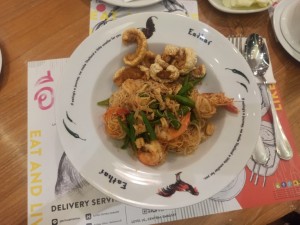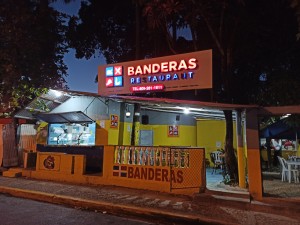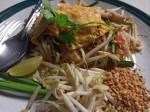

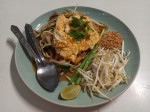
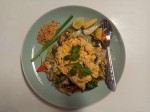
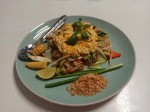

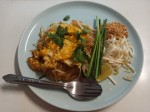


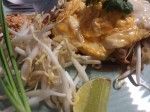
If you’re visiting Thailand for the first time and don’t know where to start your food adventure, Pad Thai is the safest and most delicious introduction you could ask for.
Well, I believe Pad-Thai is the most popular Thai dish. Does not matter where you live or where you stay, if you go to a Thai restaurant or to a Thai-style fast food bar, you will definitively find there that dish. Pad-Thai is as commonly served and liked as a regular Thai fried rice is. Order to it a cup of an iced Thai Milk Tea or coffee and you will eat like a real Thai.
What makes is Pad-Thai so popular?
There is a couple of reasons that stay behind Pad-Thai's extreme popularity. First of all, it is not very spicy. It is also not too hot and includes a lot of worldwide known ingredients. But on the other hand, it has some local aromas that are so tempting and so nicely smelling. Apart from that, it is a refreshing Thai dish. This freshness comes from lime, finely chopped coriander and from lemongrass. What is more, Pad-Thai is also good for vegetarians and vegans. Apart from that, it can be consumed by people on a gluten-free diet. Pad-Thai is also usually lactose free. Unfortunately, as it includes soya and peanuts, it should be avoided by persons with allergies on these ingredients.
Given all above, Pad-Thai is a highly recommended meal for all people willing to try something really Thai, but who are also afraid of unknown flavors and who do not want to experiment with extremely hot dishes.
That said, Pad-Thai suits most tastes, and you should definitively try it in Thailand. Nowhere else would it taste in the same way. No matter whether in other Asian countries like Vietnam or Japan, or in any Thai restaurant in Europe (Check our post on Thai and Chinese food in Hungary to get some more information) or around the world.

Why should you choose Pad Thai in Thailand?
Apart from all these reasons mentioned above, Thailand is the only place where you will get this dish in its purest form. That is here, in Thailand, where the meal was born and where all needed ingredients are on a daily basis and available on each market. Nowhere else in the world you will get as fresh herbs and vegetables, like for example lemongrass, as here in Thailand. Add to that list coriander, Chinese cabbage, juicy lime, and fresh sprouts. Finally, dried little cocktail prawns and freshly prepared sauces. All these ingredients must create a wonderful dish, there is no other option!
The key ingredients of Pad Thai
No matter whether you choose a regular Pad-Thai with meat, or this vegetarian or even a vegan one, there is a couple of ingredients that will always be in your dish.

Noodles – The Base of the Dish
Firstly come noodles. Pad-Thai basis on them. Usually that are rice vermicelli noodles or rice narrow noodles. Sometimes, Pad-Thai is served with glass noodles or with yellow egg noodles. However, these last two are rarer. Eventually, wide, or extra-wide rice noodles appear sometimes too. In some places, you will have an option to choose between different noodle types, but if no choice is available, then rice, thin noodles will probably be served.
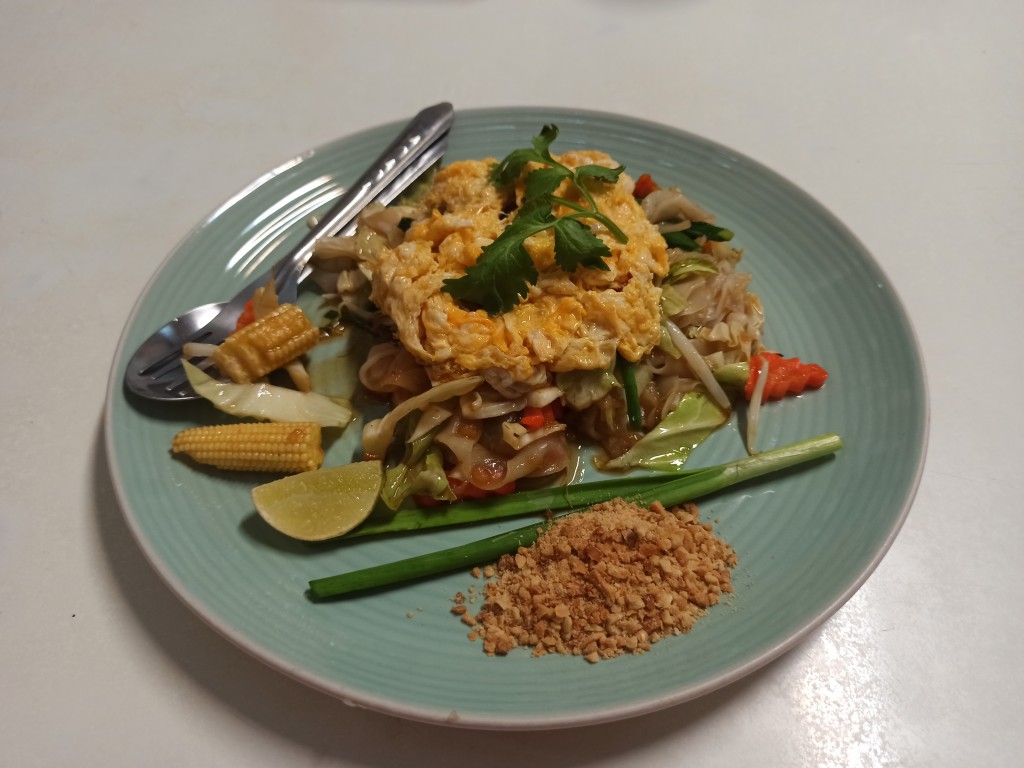
Vegetables – Freshness and Texture
A composition of different vegetables is added to Pad-Thai too. And that applies not only to a vegetarian Pad-Thai, but also to all other variations.
Chinese cabbage, carrots, shallots, and sprouts are a MUST. Then depending on the Pad-Thai type, you will get or will not get other vegetables like baby corn or beans.
Tofu – A Staple Protein
Small tofu curd cubes are very common. Usually, they are grilled or marinated and have a delicate texture. Tofu curd might either have a nicely crispy outer crust or just be plain. Cubes are relatively small but play a significant role in Pad-Thai.

Peanuts – Aroma and Crunch
Then come nuts. Actually, that are crushed peanuts that are either sprinkled on top of the dish or are fried with the rest of ingredients. Their intense aroma is well distinguishable in the whole Pad-Thai and while they are finely crushed, they are well combined with other ingredients and create a well-mixed dish.

Dried Shrimps – Umami Boost
If you order a standard version of Pad-Thai, I mean not a vegetarian one, you will definitively get these little dried prawns. Their amount in the dish will vary from place to place. Sometimes it is hard to spot them, but in most cases, they are added in abundance. That ingredient, combined with a fish sauce, adds this special fishy flavor to the whole dish.

Egg – A Must-Have Topping
Egg is another key element in Pad-Thai. Scrambled or poached and put on top of the dish. Fried, and mixed with Pad-Thai or just served as an omelet that is laid on top of Pad-Thai, egg is a MUST. As it is almost always, please, mention it that you would like not to have it if you opt for a vegan version.
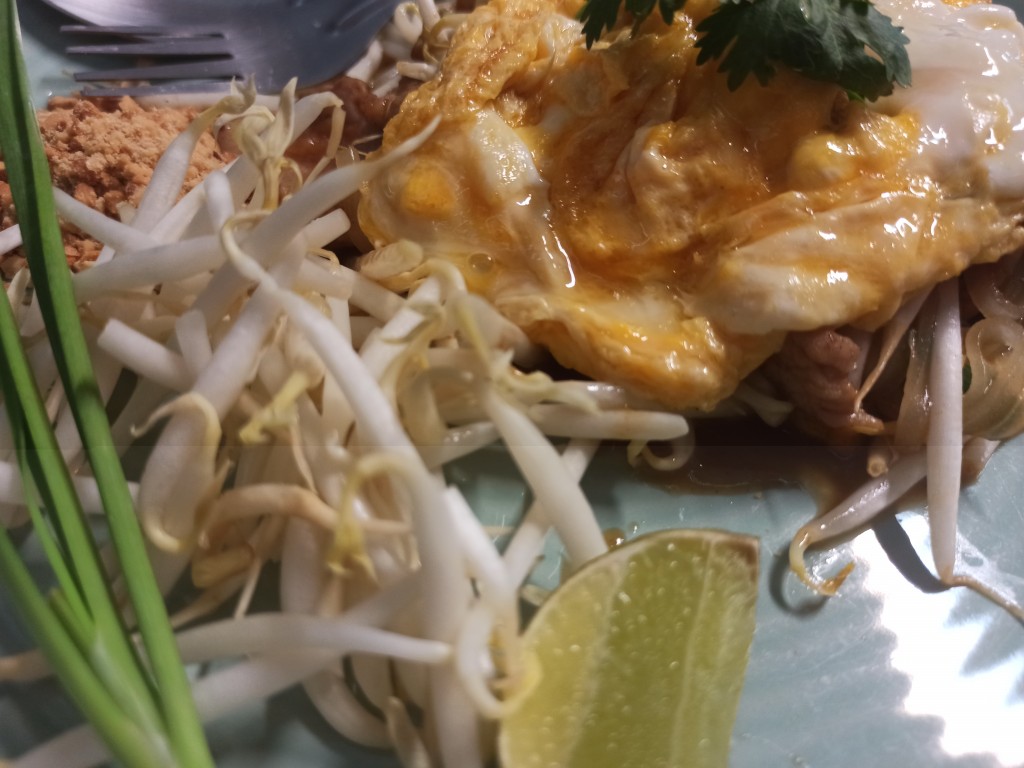
Protein Options – Meat and Seafood
Now comes the additional set of ingredients. They can be skipped, selected additionally or easily excluded. The basic Pad-Thai usually has tofu. All other meat ingredients are optional and very often are at an extra cost. Pork, chicken, and seafood is available in most places. The cheapest version of Pad-Thai is the one with pork or chicken. If you go with any kind of seafood, be prepared for a higher price.
Both pork and chicken are served in small slices and fried with the rest of ingredients. The same applies to an extra serving of the tofu curd.
Seafood might come in different forms. Choose either one type of them or their mix. If you choose a seafood mix, you will usually get a combination of prawns, squids, and mussels. But in some places, you will be able to get a crab meat too.
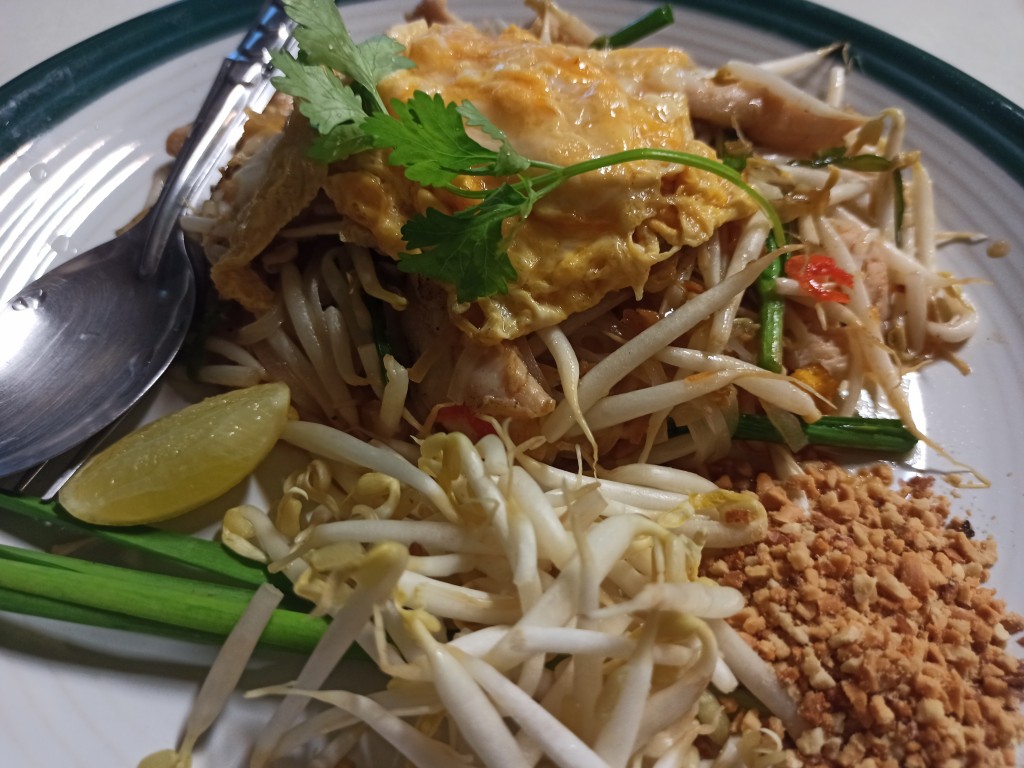
Toppings – Fresh Herbs and Lime
Pad-Thai is nicely served with some garnish. Cucumber or tomato slices come quite often and are placed close to the meal or just on it. Pad-Thai is also very often topped with some fresh coriander leaves and peanuts. Finally, half or a quarter of a fresh lime is added aside, so that you can squeeze it and add it to the Pad-Thai. Thanks to that, the whole dish will get a refreshing aroma and will nicely tune the meal. Optionally, some fresh onion rings or a piece of a young, green onion is added too.
Sauces – The Secret to Real Pad Thai Flavor
They are almost the most important elements of the Pad-Thai. Without a proper composition and proportion of them, Pad-Thai would not be this real Pad-Thai. Lime juice, some fish sauce, sugar, peanut oil and a dash of soy sauce are crucial. Of course, each recipe might slightly vary one from another, but this special composition of all ingredients and sauces makes Pad-Thai so difficult to be recreated at home if you are not a Thai.
Can everyone eat Pad Thai?
Pad Thai is a remarkably versatile dish that suits many diets and preferences. If you're vegetarian or even vegan, simply ask for a version without meat, egg, or fish sauce – most street vendors and restaurants will gladly accommodate. Tofu, vegetables, and a lime-based sauce still make for a flavorful experience.
Good news for those with gluten intolerance: traditional Pad Thai noodles are made from rice, which is naturally gluten-free. However, double-check if soy sauce is used, as it may contain wheat – look for tamari-based alternatives or ask in advance.
On the dairy front, Pad Thai is usually completely lactose-free. It's also low in sugar unless sweet sauces are heavily used.
Allergy warning: Pad Thai often contains crushed peanuts and soy. If you’re allergic to either, make sure to communicate this clearly before ordering.
How much does Pad Thai cost in Thailand?
One of the reasons why Pad Thai is so beloved by travelers is its price. You can find this dish on almost every street corner, especially in night markets or near tourist areas.
- 🥢 Street food stalls: ฿40–60 THB (about €1–1.5)
- 🍽️ Local restaurants: ฿80–120 THB
- 🍷 Tourist restaurants or premium venues: ฿150–250+ THB
Adding seafood or meat usually increases the price, while vegetarian versions are often the most affordable. Still, even in upscale places, Pad Thai remains a budget-friendly meal packed with flavor.
Final thoughts – Try It like a local
Whether you're a curious foodie, a cautious eater, or simply looking for a tasty meal, Pad Thai is your gateway into the world of Thai cuisine. It's mild, customizable, and always satisfying. And most importantly – it tastes best when eaten in Thailand, cooked fresh at a bustling street stall with local ingredients.
So don’t hesitate – grab a plate of Pad Thai, sit among the locals, and enjoy Thailand one bite at a time.
Last updated: July 22, 2025
Date: 2022-11-07
Author: Beti – A passionate traveler and lover of Asian cuisine, especially Thai and Japanese dishes, Bernadeta brings her culinary and cultural experiences to life in her writing. Beyond her travels, she’s an avid technology enthusiast with a deep interest in data processing, merging her love for exploration with analytical insights.
Photographer: Adalbert – An aficionado of computers and photography, Adalbert captures the essence of diverse cuisines with a discerning eye. A connoisseur of rich flavors and particularly fond of meat-based dishes, he combines his technical skills with his passion for the culinary arts in every shot.



